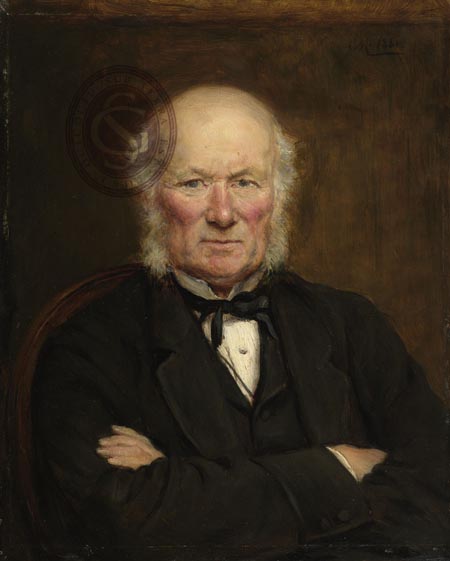Portrait of William Pengelly (1812-1894)
 |
|
Portrait in oils of William Pengelly, by 'A M', 1881. (GSL/POR/11)
Provenance: From executors of Mrs Hester Forbes Julian, née Pengelly, daughter of William Pengelly, 1934.
|
William Pengelly was a self-taught mathematician and natural scientist. He lived in Torquay most of his life, having moved there around 1836 to open a school. He would later give this up to lecture on subjects including astronomy, geology, palaeontology and archaeology around the country.
Pengelly was interested in the geology of Cornwall and Devon, particularly its caves and attempting to establish their connection to human prehistory. Despite rapid developments in geological science, the history of mankind was still wedded to the biblical timeline.

|
| Flints found by Pengelly in Brixham Cave (which he referred to as Windmill Hill), from William Pengelly, “The Cavern Discovered in 1858 in Windmill Hill, Brixham, South Devon”, ‘Transactions of the Devonshire Association for the Advancement of Science, Literature & Art’, 1874. |
In 1846, Pengelly excavated the local site of Kent’s Cavern. Like earlier workers on the site, he found hand-worked flints. Proving that they were contemporaneous with the surroundings was far more difficult as it had been disturbed too much by previous excavations.
This was to change in 1858 when he became aware of another local site which was completely untouched. Pengelly was in charge of the excavations of Brixham Cave, initially under the auspices of the Geological Society’s ‘Brixham Cave Committee’. There he found again many man-made tools which, along with Joseph Prestwich’s and John Evans’ identification of similar tools in the Valley of the Somme in 1859, finally proved that mankind was older than previously thought.
Pengelly was elected a Fellow of the Geological Society on 6 February 1850 (no.1576). He was awarded the Lyell Fund in 1877 and the Lyell Medal in 1886.
Read more about Pengelly in our online exhibition Brixham Cave and the Antiquity of Man